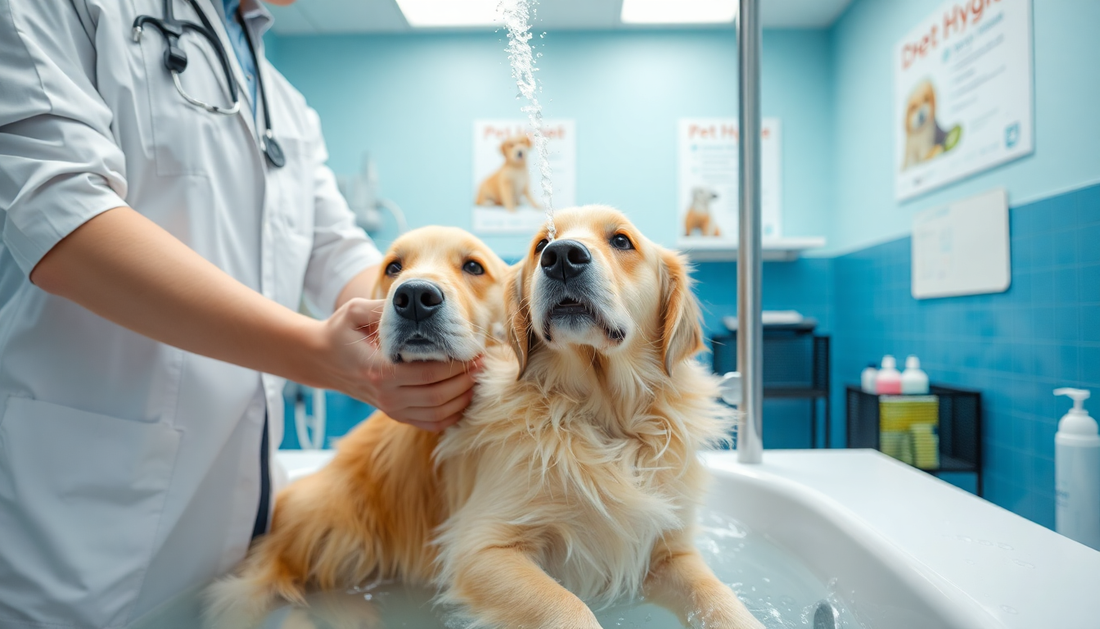
How Often Should You Really Bathe Your Dog or Cat?
Share
Maintaining proper hygiene is essential for the health and well-being of our beloved pets. However, there are many misconceptions when it comes to the ideal bathing frequency for dogs and cats. Over-bathing can actually do more harm than good, while under-bathing can lead to skin irritation, odor, and other issues. As pet owners, it's important to understand the right balance to keep our furry friends clean and comfortable.
Bathing Dogs: Finding the Optimal Frequency
The general recommendation for bathing dogs is every 4-6 weeks, but this can vary depending on several factors. Highly active dogs that get dirty more often may need more frequent baths, while dogs with low activity levels can often go longer between washes. Factors like breed, coat type, and skin sensitivity should also be considered.
One of the most common signs that a dog needs a bath is a noticeable odor. If your pup starts to develop a distinct doggy smell, it's probably time for a wash. You may also notice their coat becoming dull, greasy, or matted, which indicates a buildup of dirt and oils.
It's important not to over-bathe your dog, as this can strip their skin of natural oils and lead to dryness, itchiness, and even infections. Bathing more than once a month is generally not recommended unless your dog has gotten exceptionally dirty or has a specific skin condition that requires more frequent cleaning.
When choosing a dog shampoo, look for gentle, pH-balanced formulas that won't irritate your pup's skin. Avoid harsh chemicals and opt for natural, moisturizing ingredients instead. This will help maintain the health and shine of your dog's coat.
Bathing Cats: Do They Really Need It?
Contrary to popular belief, most cats do not require regular baths. Cats are naturally fastidious groomers and typically do an excellent job of keeping themselves clean. Their saliva contains enzymes that help break down dirt and oils, and their rough tongues act as natural brushes.
That said, there are some instances where bathing a cat may be necessary. Older cats, long-haired breeds, or cats with certain medical conditions may struggle to groom themselves effectively. In these cases, a gentle, infrequent bath can help remove excess dirt and dander.
When bathing a cat, it's important to use a mild, cat-specific shampoo and to make the experience as stress-free as possible. Introduce your cat to the bathing process gradually, and consider using a waterless shampoo or dry bath method if your feline friend is particularly averse to water.
Bathing Techniques: Making It a Positive Experience
Regardless of whether you're bathing a dog or a cat, there are several techniques you can use to make the process more enjoyable for both you and your pet. Start by introducing your furry friend to the bathing area gradually, allowing them to get comfortable with the sights, sounds, and smells.
When it's time for the actual bath, use lukewarm water and a gentle, massaging motion to clean your pet's coat. Avoid getting water in their ears, and be sure to thoroughly rinse away all traces of shampoo. Afterward, use a soft towel to gently dry your pet, taking care not to rub too vigorously.
If your pet is particularly anxious or resistant to baths, consider using a waterless shampoo or dry bath method. These products allow you to clean your pet's coat without the need for a full immersion in water, which can be a more positive experience for some animals.
Special Considerations for Smelly, Sensitive, and Dirty Pets
Even with a regular bathing routine, some pets may develop persistent odors or skin issues that require additional attention. Dogs with particularly smelly coats may benefit from more frequent bathing, as well as the use of deodorizing shampoos or wipes.
For dogs with dry or sensitive skin, it's important to use a gentle, moisturizing shampoo that won't strip their natural oils. You may also want to consider adding a leave-in conditioner or skin-soothing spray to their grooming routine.
Puppies and kittens may require more frequent baths as they learn to groom themselves, but it's important to introduce the process slowly and positively to avoid creating a lifelong aversion to bathing.
Conclusion: Keeping Your Pets Clean and Comfortable
Maintaining proper pet hygiene is essential for their overall health and well-being. By understanding the right bathing frequency and techniques for your dog or cat, you can keep your furry friend clean, comfortable, and smelling fresh between grooming sessions.
Remember, every pet is unique, so it's important to pay attention to your individual animal's needs and adjust your bathing routine accordingly. With a little patience and the right approach, bath time can be a positive experience for both you and your beloved companion.
